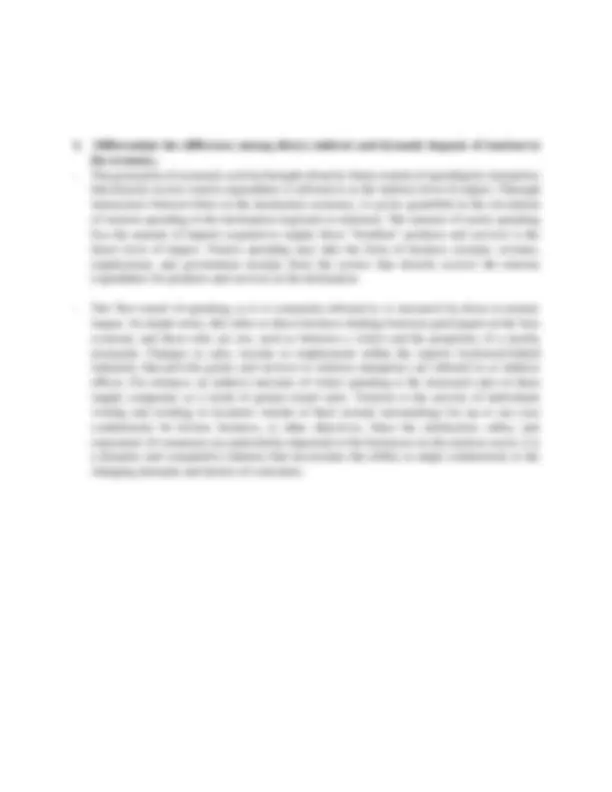



Study with the several resources on Docsity

Earn points by helping other students or get them with a premium plan


Prepare for your exams
Study with the several resources on Docsity

Earn points to download
Earn points by helping other students or get them with a premium plan
Community
Ask the community for help and clear up your study doubts
Discover the best universities in your country according to Docsity users
Free resources
Download our free guides on studying techniques, anxiety management strategies, and thesis advice from Docsity tutors
The economic impacts of sustainable tourism, including the benefits and costs of tourism in the economy, as well as the differentiation between direct, indirect, and dynamic impacts. It highlights how tourism can drive economic development, enhance cultural heritage, improve employment prospects, and boost a country's balance of payments. However, it also acknowledges the potential drawbacks, such as the need for infrastructure development and the potential for cultural exchange between visitors and locals. A comprehensive overview of the economic implications of sustainable tourism, making it a valuable resource for students, researchers, and policymakers interested in understanding the multifaceted nature of this industry.
Typology: Study notes
1 / 2

This page cannot be seen from the preview
Don't miss anything!


Our Lady of Fatima University – Antipolo Campus College of Hospitality and Institutional Management SUSTAINABLE TOURISM 411
Submitted by: Jefferson S. Marques Section: BSITM-TTO 4-A- 2
1. What are the benefits and costs of tourism in the economy?
2. Differentiate the difference among direct, indirect and dynamic impacts of tourism in the economy.